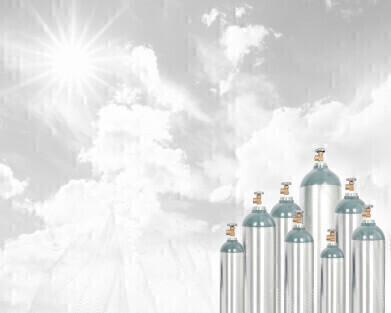Gas Detection
High quality gas mixtures for emissions monitoring
Jan 31 2023
CEMS (Continuous Emissions Monitoring Systems) are an extremely important part of the global commitment to reduce emissions from industrial, waste management, mining operations and more.
CEMS analysers have been designed to measure a variety of gases including methane, carbon dioxide, sulphur dioxide, carbon monoxide, nitrogen dioxide, nitric oxide, and many others.
Provided they are maintained correctly, CEMS analysers will be accurate and precise. The most important aspect of their accuracy is the quality and precision of the calibration gas mixtures which are used to calibrate the analysers. The selection of the correct calibration gas is critical in the analyser achieving its greatest analytical potential.
If a poor quality, inaccurate calibration gas is used, no gas analyser will be as accurate as it otherwise could be.
Selecting the correct calibration gas is directly dependent upon the customer requirements and governmental regulations.
In all cases there are two key terms which impact the final quality of the gas mixture: the blend tolerance and the analytical tolerance (uncertainty/accuracy) of the gas mixture.
Blend tolerance refers to the minimum acceptable uncertainty associated with the actual production of the blend. These uncertainties are accumulated during the manufacturing process because of equipment used in production and due to the physical properties of the gases.
Analytical tolerance is the minimum acceptable uncertainty associated with the analysis of the blend. This uncertainty is accumulated throughout the analytical procedure and includes instrument and calibration uncertainties.
In most applications analytical tolerance is of greater importance than blend tolerance. This is because analytical tolerance represents the range in which the actual concentration may be in relation to the analytical concentration.
Simply put, if your request was for 100ppm, two different gas mixtures could result in dramatically different outcomes depending upon the blend tolerance and analytical tolerance requested. The following provides an example of this:
Gas mixture 1: Blend tolerance: 10% /Analytical tolerance: 2%
This gas mixture could be produced between 90ppm -110pm. If the gas mixture results were 105ppm, then the gas mixture could be between: 103ppm -107ppm.
Gas mixture 2: Blend tolerance: 5% /Analytical tolerance: 1%
This gas mixture could be produced between 95ppm -105ppm. If the gas mixture results were 102ppm, then this gas mixture could be between: 101ppm -103ppm.
At CAC GAS we provide a variety of gas mixtures based upon the application requirements.
For CEMS application our EPA Protocol gas mixtures meet the highest precision criteria with typical blend tolerance of 5% or better and analytical tolerance of 1%. EPA Protocol gas mixtures are manufactured and analytically certified in strict accordance with the most recent EPA guidelines.
EPA Protocol gas mixtures can have long shelf life with SO2/NO/CO/CO2 gas mixtures achieving up to 96 months certification period depending upon the concentration.
Blend tolerance, analytical tolerance, and shelf life all add up to a higher quality gas mixture which will maximise the performance of the gas analyser selected for the application. The gas mixture is the heart of the CEM System and without it the gas analyser will not achieve its greatest capabilities.
Digital Edition
AET 28.2 April/May 2024
May 2024
Business News - Teledyne Marine expands with the acquisition of Valeport - Signal partners with gas analysis experts in Korea Air Monitoring - Continuous Fine Particulate Emission Monitor...
View all digital editions
Events
Jul 30 2024 Jakarta, Indonesia
China Energy Summit & Exhibition
Jul 31 2024 Beijing, China
2024 Beijing International Coal & Mining Exhibition
Aug 07 2024 Beijing, China
IWA World Water Congress & Exhibition
Aug 11 2024 Toronto, Canada
Aug 25 2024 Stockholm, Sweden and online









.jpg)








